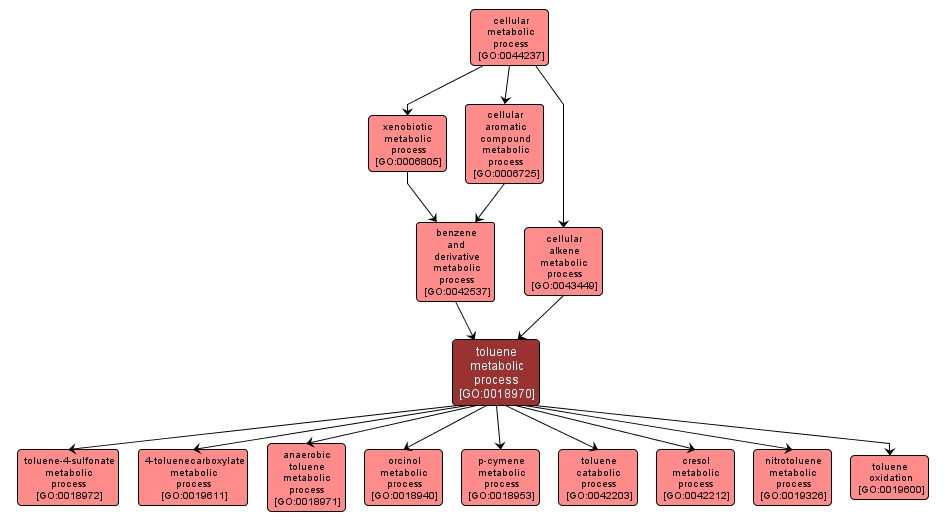GO TERM SUMMARY
|
| Name: |
toluene metabolic process |
| Acc: |
GO:0018970 |
| Aspect: |
Biological Process |
| Desc: |
The chemical reactions and pathways involving toluene, a volatile monoaromatic hydrocarbon found in crude petroleum and petroleum products such as gasoline and commonly used as a paint thinning agent and in other solvent applications. |
Synonyms:
- toluene metabolism
- methylbenzene metabolic process
- methylbenzene metabolism
|
|

|
INTERACTIVE GO GRAPH
|














